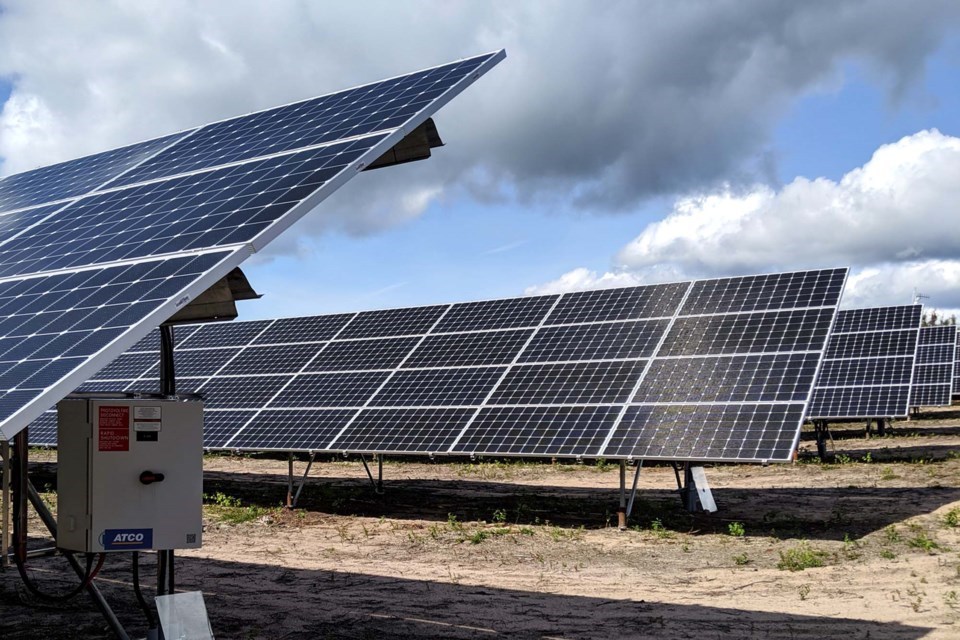A new federal investment credit program to develop green energy across Canada isn't enough to revive St. Albert's solar farm project, city administration says.
The new credit program, one of two announced by the federal government in the 2023 budget released March 28, would cover up to 15 per cent of capital costs for municipalities or Crown corporations looking to build green energy projects, such as the solar farm city council voted to squash last fall.
The second program applies to private companies and would cover up to 30 per cent of capital costs for various clean technology projects, such as wind-power storage facilities.
Coun. Ken MacKay told the Gazette he thinks the solar farm is completely off the table.
“There's zero interest right now that I'm aware of or momentum towards re-instituting the solar farm project,” he said.
Coun. Mike Killick said he thinks the federal government is on the right track with the two new credit programs, but the complexity of the solar farm in St. Albert would require more assistance than 15 per cent.
“It's always good when the federal government comes out with subsidies on green energy, I would be in favour of that, but I think there are a number of other factors,” Killick said.
“There are quite a number of complex rules that would have to be re-looked at it, but I don't think that this would make it enough to make this a viable project again.”
The city said even with the grants, the solar farm wouldn't turn a profit.
“There are many variables, but we estimate that a 15 per cent grant would likely turn a commercial solar farm from a money-losing project into a potential break-even project,” said Cory Sinclair, the city's corporate communications manager.
“The commercial solar farm in the financial analysis projected a net loss of $3.27 million over the expected life of the project (35 years).”
St. Albert's 15-megawatt solar farm project received preliminary council approval in 2021 at an estimated cost of $26.1 million. A 15 per cent federal credit would amount to just over $3.9 million when applied to the 2021 project estimate. However, Sinclair noted other recent developments also point toward the solar farm remaining unviable.
For example, Sinclair said, interest rates on borrowing have increased by 0.13 per cent since the project's previous estimate, meaning it would cost the city more than planned to take on debt to fund construction. As well, if the farm was to hypothetically become operational immediately, the city would still receive $1.7 million less in Distribution-Connected Generation (DCG) credits than was initially budgeted for, as the DCG credit program is scheduled to be phased out by 2026.
DCG credits are paid by utility companies such as Fortis Alberta to small-time electricity generators that are not connected to the provincial electricity grid, but still sell electricity to utility companies, who in turn sell it to consumers. In 2021, the Alberta Utilities Commission ruled the DCG credit program was making electricity rates unreasonable for ratepayers.
Another major hurdle for the solar farm project was the $4.5 million price tag for remediating the city's Badger Lands, the planned location of the solar farm. The land is used as excess snow storage space, a dumping ground for street sweepers, and a transfer station for wood mulch waste, the city's senior manager of utilities Regan Lefebvre wrote in a report for council last September.
“Also, once we achieve net zero in the electricity grid in Alberta, the project would no longer receive environmental attributes,” Sinclair said. “(The initial estimate) had assumed that net zero would be achieved by 2049 (and) the stated goal of the federal government is to achieve net zero in the national electricity grid by 2035.”
“The faster net zero is achieved, the less revenue the project receives from environmental attributes,” he said.




